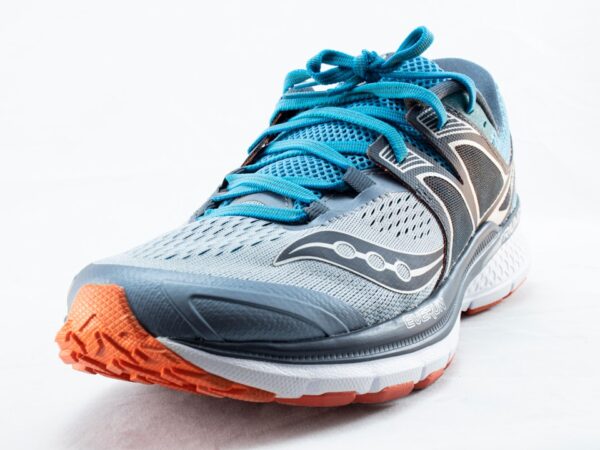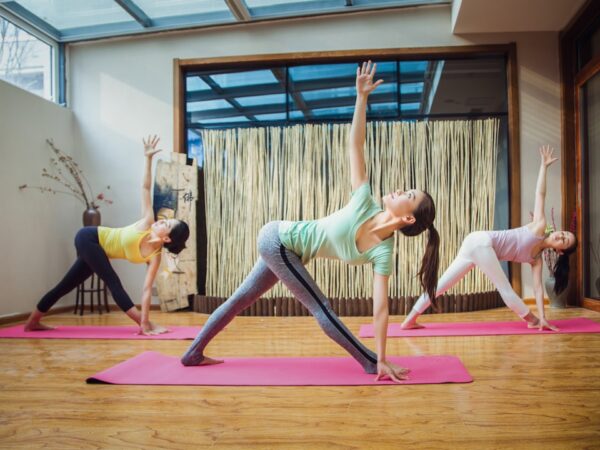Yoga for Beginners: A Gentle Introduction to Mindful Movement
Yoga is an ancient Indian practice dating back over 5,000 years. It is a comprehensive approach to health and well-being that incorporates physical postures, breathing exercises, meditation, and ethical principles. The term “yoga” means to unite, reflecting its aim to harmonize body, mind, and spirit.
The essence of yoga lies in creating balance and harmony within oneself. Various styles of yoga exist, each with distinct emphases and methodologies. Some, like Hatha yoga, prioritize physical postures and breathing techniques, while others, such as Kundalini yoga, integrate chanting and meditation.
Despite these differences, all yoga styles share the common goal of fostering self-awareness, inner peace, and a sense of connection to one’s surroundings. Yoga extends beyond physical practice to encompass spiritual and philosophical dimensions. The Yamas and Niyamas, yoga’s ethical principles, provide a moral framework for living a purposeful life.
These principles include non-violence, truthfulness, non-stealing, self-discipline, contentment, and self-study. Integrating these principles into daily life can cultivate greater compassion, integrity, and inner peace.
Key Takeaways
- Yoga is a practice that combines physical postures, breathing techniques, and meditation to promote overall well-being.
- Beginners can experience benefits such as improved flexibility, strength, and stress reduction through regular yoga practice.
- There are various yoga styles to choose from, including Hatha, Vinyasa, and Restorative, so it’s important to find the right one that suits your needs and preferences.
- Gentle yoga poses like Child’s Pose, Cat-Cow, and Mountain Pose are great for beginners to start with and can help improve flexibility and relaxation.
- Breathing techniques such as Ujjayi breath and alternate nostril breathing can help calm the mind and enhance the yoga practice.
Benefits of Yoga for Beginners
Physical Benefits of Yoga
Yoga offers a wide range of physical benefits for beginners, including improved flexibility, strength, and balance. Regular practice can also promote better posture and alignment, which can help alleviate chronic pain and prevent injuries.
Mental and Emotional Benefits of Yoga
In addition to physical benefits, yoga can also have a profound impact on mental and emotional well-being. By reducing stress and anxiety, improving concentration and focus, and promoting a sense of calm and relaxation, yoga can help beginners cultivate a greater sense of self-awareness and inner peace.
Accessibility and Universality of Yoga
One of the greatest benefits of yoga for beginners is its accessibility. Regardless of age or fitness level, yoga can be practiced and modified to accommodate individual needs and limitations. Whether you’re looking to improve physical fitness, reduce stress, or cultivate inner peace, yoga has something to offer everyone.
Finding the Right Yoga Style for You

With so many different styles of yoga to choose from, finding the right one for you can seem overwhelming. It’s important to consider your own personal goals and preferences when selecting a yoga style. If you are looking for a gentle introduction to yoga, Hatha or Yin yoga may be a good place to start.
These styles focus on slow-paced movements and deep stretching, making them ideal for beginners. If you are looking for a more physically challenging practice, Vinyasa or Ashtanga yoga may be a better fit. These styles incorporate more dynamic movements and flowing sequences, which can help to build strength and endurance.
For those interested in the spiritual aspects of yoga, Kundalini or Bhakti yoga may be worth exploring. These styles incorporate chanting, meditation, and spiritual teachings into the practice. It’s also important to consider any physical limitations or health concerns when choosing a yoga style.
If you have a history of injuries or chronic pain, it may be beneficial to seek out a gentle or restorative style of yoga. Additionally, if you are pregnant or have specific health concerns, it’s important to consult with a qualified yoga instructor before beginning a new practice.
Gentle Yoga Poses for Beginners
| Yoga Pose | Description |
|---|---|
| Mountain Pose (Tadasana) | Standing tall with feet together, arms at sides, and shoulders relaxed. |
| Child’s Pose (Balasana) | Kneel on the floor, touch big toes together, sit on heels, and stretch arms forward. |
| Downward-Facing Dog (Adho Mukha Svanasana) | Start on hands and knees, lift hips up and back, forming an inverted V shape. |
| Warrior I (Virabhadrasana I) | Step one foot forward, bend front knee, and extend arms overhead. |
| Tree Pose (Vrksasana) | Stand on one leg, place sole of other foot inside thigh, and bring hands to heart center. |
For beginners, gentle yoga poses can provide a safe and effective introduction to the practice. These poses are designed to improve flexibility, strength, and balance while also promoting relaxation and stress relief. Some gentle yoga poses for beginners include: – Child’s Pose: This pose helps to stretch the hips, thighs, and lower back while promoting relaxation and stress relief.
– Cat-Cow Pose: This gentle flowing movement helps to improve spinal flexibility and mobility while also promoting relaxation.
– Downward-Facing Dog: This pose helps to stretch the entire body while also building strength in the arms and legs.
– Warrior I: This pose helps to build strength in the legs while also improving balance and stability.
– Tree Pose: This balancing pose helps to improve focus and concentration while also strengthening the legs and core.
These gentle yoga poses are suitable for beginners of all ages and fitness levels. They can be easily modified to accommodate individual needs and limitations, making them an ideal starting point for those new to the practice of yoga.
Breathing Techniques in Yoga
Breathing techniques are an essential aspect of the practice of yoga. In yoga, the breath is considered to be the bridge between the body and mind, and learning how to control the breath can have profound effects on our physical, mental, and emotional well-being. There are several different breathing techniques used in yoga, each with its own unique benefits.
One of the most common breathing techniques in yoga is diaphragmatic breathing, also known as belly breathing. This technique involves breathing deeply into the belly, allowing the diaphragm to fully expand and contract with each breath. Diaphragmatic breathing helps to reduce stress and anxiety, improve lung function, and promote relaxation.
Another important breathing technique in yoga is ujjayi breath, also known as victorious breath. This technique involves breathing in and out through the nose while constricting the back of the throat slightly. Ujjayi breath helps to create a soothing sound that can help to focus the mind and deepen the practice of mindfulness.
Pranayama is another important aspect of breathing in yoga. Pranayama refers to various breathing exercises that help to regulate the flow of prana, or life force energy, within the body. These exercises can help to increase energy levels, reduce stress, and promote mental clarity.
Tips for a Successful Yoga Practice

Setting the Foundation
Whether you’re new to yoga or have been practicing for years, setting realistic goals is essential. Be patient with yourself as you progress, and listen to your body to avoid injury. Modify poses as needed, and don’t push yourself too hard.
Finding Guidance and Consistency
Find a qualified instructor who can provide guidance and support as you learn new poses and techniques. Consistency is key in yoga, so try to establish a regular practice schedule that works for you. This will help you make progress and see the benefits of yoga.
Creating a Peaceful Environment
Create a peaceful space where you can practice without distractions. Use soft lighting or calming music to set the tone, and find a quiet space that allows you to focus on your practice. This will help you stay present and get the most out of your practice.
By following these tips, you can create a successful and fulfilling yoga practice that supports your overall health and well-being. Remember to stay open-minded, practice self-care, and take time for yourself both on and off the mat.
Incorporating Mindfulness into Your Yoga Practice
Mindfulness is an essential aspect of the practice of yoga. Mindfulness involves being fully present in the moment without judgment or attachment. In yoga, mindfulness is cultivated through focused attention on the breath, body sensations, and mental states.
One way to incorporate mindfulness into your yoga practice is by paying attention to your breath as you move through different poses. By focusing on the breath, you can bring your attention into the present moment and cultivate a greater sense of awareness. Another way to cultivate mindfulness in yoga is by paying attention to physical sensations in the body.
As you move through different poses, pay attention to how each pose feels in your body and any sensations that arise. This can help you develop a greater sense of body awareness and presence. In addition to focusing on the breath and body sensations, mindfulness in yoga also involves paying attention to mental states such as thoughts and emotions.
By observing these mental states without judgment or attachment, you can develop greater insight into your own mind and cultivate a greater sense of inner peace. By incorporating mindfulness into your yoga practice, you can deepen your experience on the mat and cultivate greater awareness in all aspects of your life. Mindfulness can help you reduce stress, improve concentration, and promote emotional well-being both on and off the mat.
If you’re just starting out with yoga, it’s important to find the right resources to guide you through the basics. One helpful article to check out is “10 Yoga Poses for Beginners” from Golkakra. This article provides a step-by-step guide to 10 beginner-friendly yoga poses, making it easier for newcomers to get started on their yoga journey. With the help of resources like this, beginners can feel more confident and comfortable as they begin their yoga practice.
FAQs
What is yoga?
Yoga is a physical, mental, and spiritual practice that originated in ancient India. It involves a combination of physical postures, breathing techniques, and meditation or relaxation.
What are the benefits of yoga for beginners?
Yoga can help improve flexibility, strength, and balance. It also promotes relaxation, reduces stress, and can improve overall mental and physical well-being.
Do I need to be flexible to start yoga?
No, you do not need to be flexible to start yoga. Yoga is a practice that can help improve flexibility over time, so it is suitable for people of all levels of flexibility.
What do I need to start practicing yoga?
To start practicing yoga, you will need a yoga mat and comfortable clothing that allows for easy movement. Some beginners may also find it helpful to have yoga blocks and a strap to assist with certain poses.
Are there different types of yoga for beginners?
Yes, there are different types of yoga suitable for beginners, such as Hatha, Vinyasa, and Yin yoga. It’s important to find a style that suits your preferences and level of fitness.
Is it safe to practice yoga as a beginner?
Yes, yoga is generally safe for beginners. However, it’s important to listen to your body, take things at your own pace, and seek guidance from a qualified instructor if you have any health concerns or injuries.










